With their tall, dancing, showy heads in a range of colours, these ornamental onions look gorgeous all year, but to be sure of success, you need to know when to plant your allium bulbs, says garden writer Lucy Bellamy.
Dazzling alliums are often called the firework flower and are among the best outdoor plants to grow. In every shade of purple, from intense violet to delicate lilac, or even sparkling white, alliums are hard to beat for amazing tones and striking shapes. Allium flowers grow from bulbs and most flower in May and June. Handily, they can also be bought in pots as shooting and flowering plants that are ready to go, and perfect for popping straight in the soil.
All alliums are brilliant for adding structure to the garden in the border or outdoor pot, with huge, round flowers. Each one is like an explosion, some big, some small, at the top of tall, neat stalks. Plant an allium to flower in spring and it will come back each year. They are incredibly reliable, easy-care plants.
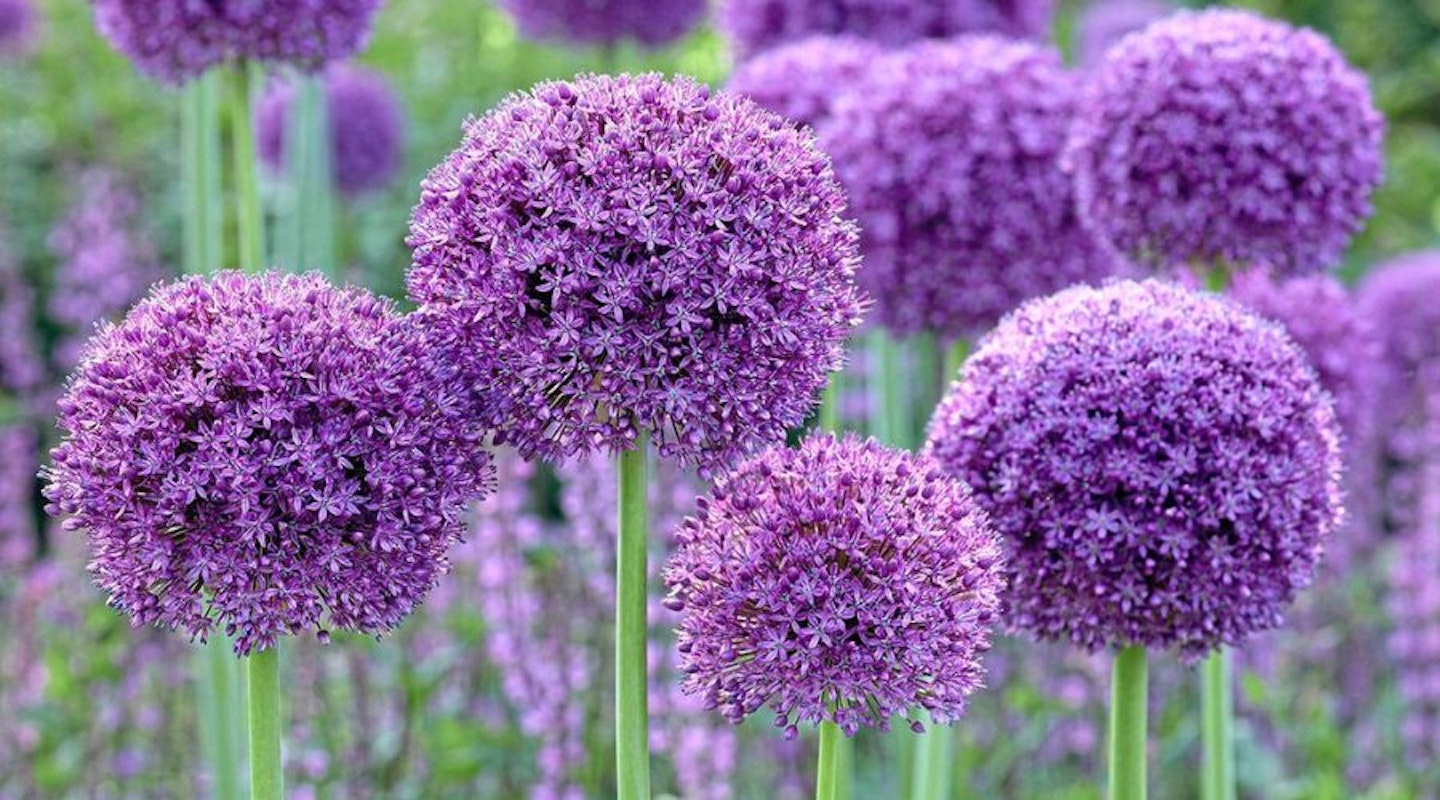
There are three main types – the spiky pom-pom headed varieties, drumstick alliums with oval-shaped heads which tend to flower later (from July), and edible alliums, better known as chives, with an amazing onion flavour.
Like most early flowering bulbs, the green leaves are low down on the plant and they do all the hard work to feed the bulb before the flowers burst open. This makes alliums super-easy to use anywhere in the garden as they can be popped into gaps among other plants. They mix readily with lots of different flowers, hovering above their next-door neighbours like purple pom-poms.
In a pot, alliums work well on their own but they are also good companions for other flowers, bringing a bolt of vivid colour and keeping their lollipop shapes much later into the year.
When winter arrives and the plants die back, the spherical dried flowerheads will still look attractive in the garden or can be cut to take indoors to make interesting displays in vases and jugs.
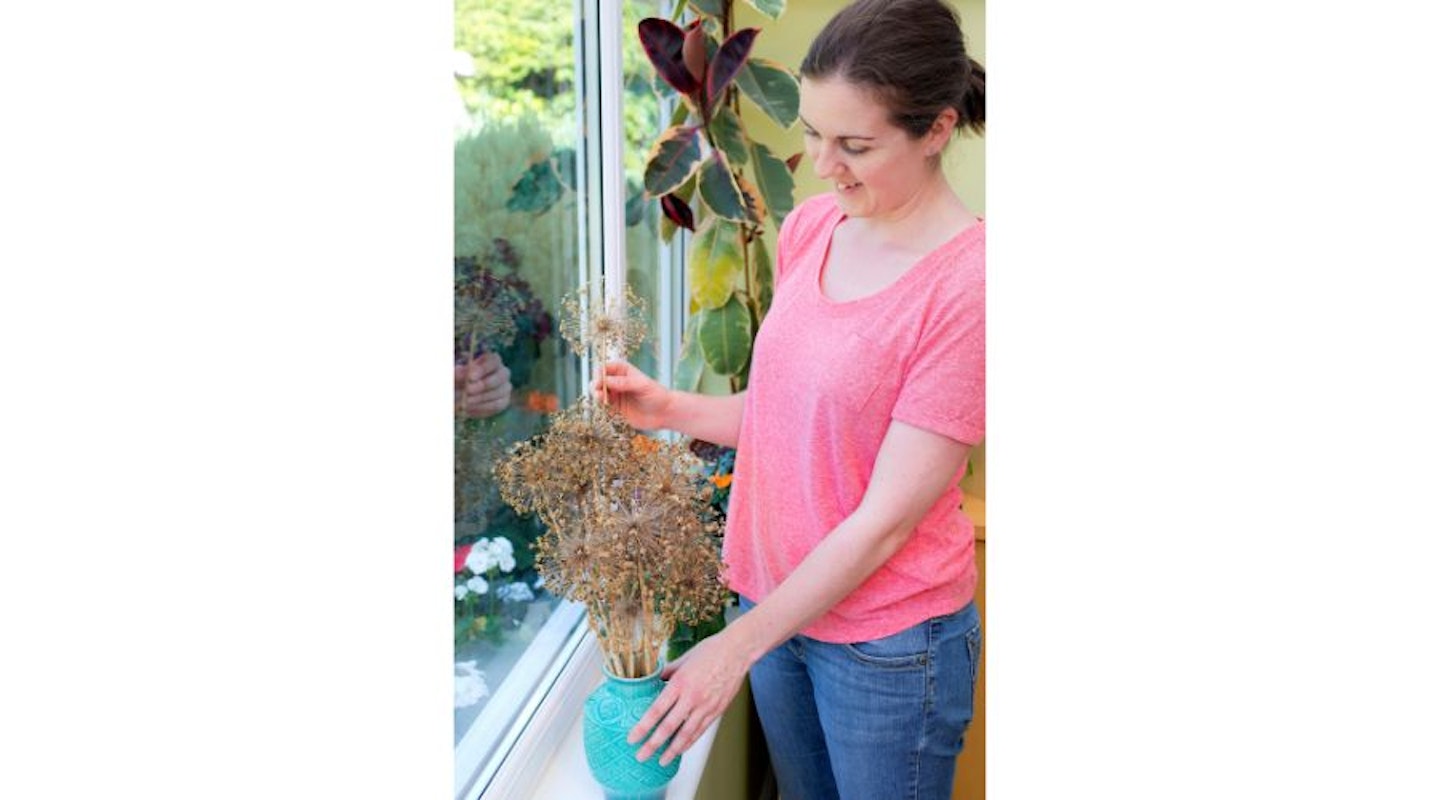
Preparing for planting
When you buy, if you can, pick out the largest bulbs as they’ll produce stronger plants with bigger flowers, advises garden writer Jules Barton-Breck. And these stronger stems will last better into autumn for natty natural sculptures and to dry for Christmas decs.
Alliums do best in a sunny spot and, because the leaves start to brown as they flower, choose a spot amid perennial plants to hide the fading foliage. Top-heavy blooms of tall alliums are also at risk of wind damage, so choose a sheltered position for protection. Low varieties are ideal for the front of borders or edging pathways, while tall blooms add drama to the middle of beds.
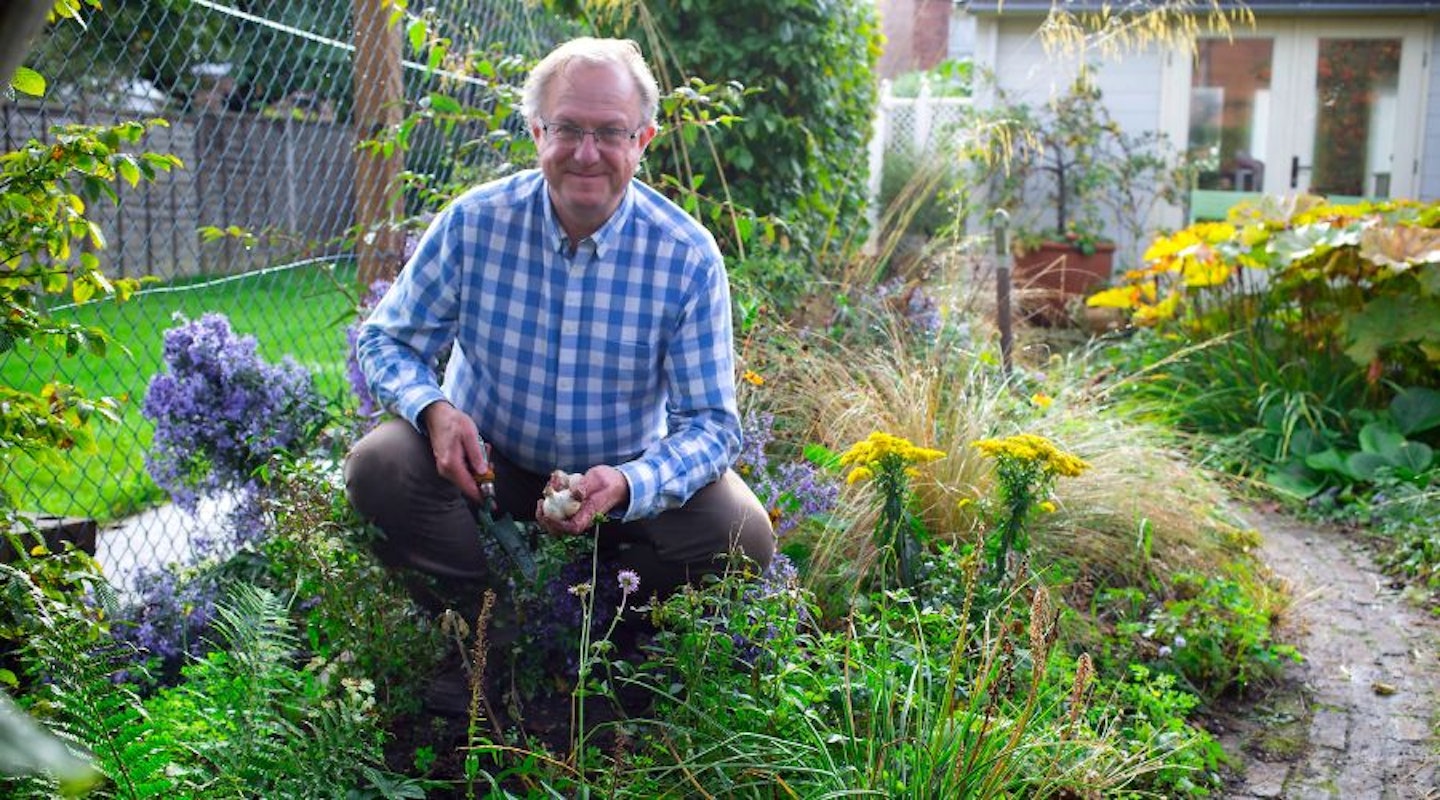
Optimal planting time and planting allium bulbs
The most cost-effective way to grow alliums is by planting bulbs. They need to be planted in autumn to flower the following spring.
Individual alliums can look a bit isolated so it’s a good idea to plant them in small groups of 12 or more or even drifts that weave among other plants and link different elements of the garden.
Take note of the eventual size of the flowers – some allium blooms can grow as big as 25cm across, so you’ll need to leave plenty of space between the bulbs.
For each bulb, dig a hole at least three times the height of the bulb and pop it in with the pointed end facing up. Leave a space of 10-20cm between each bulb, depending on the size of the flower. Cover with soil and water if your soil is dry – and that’s it!
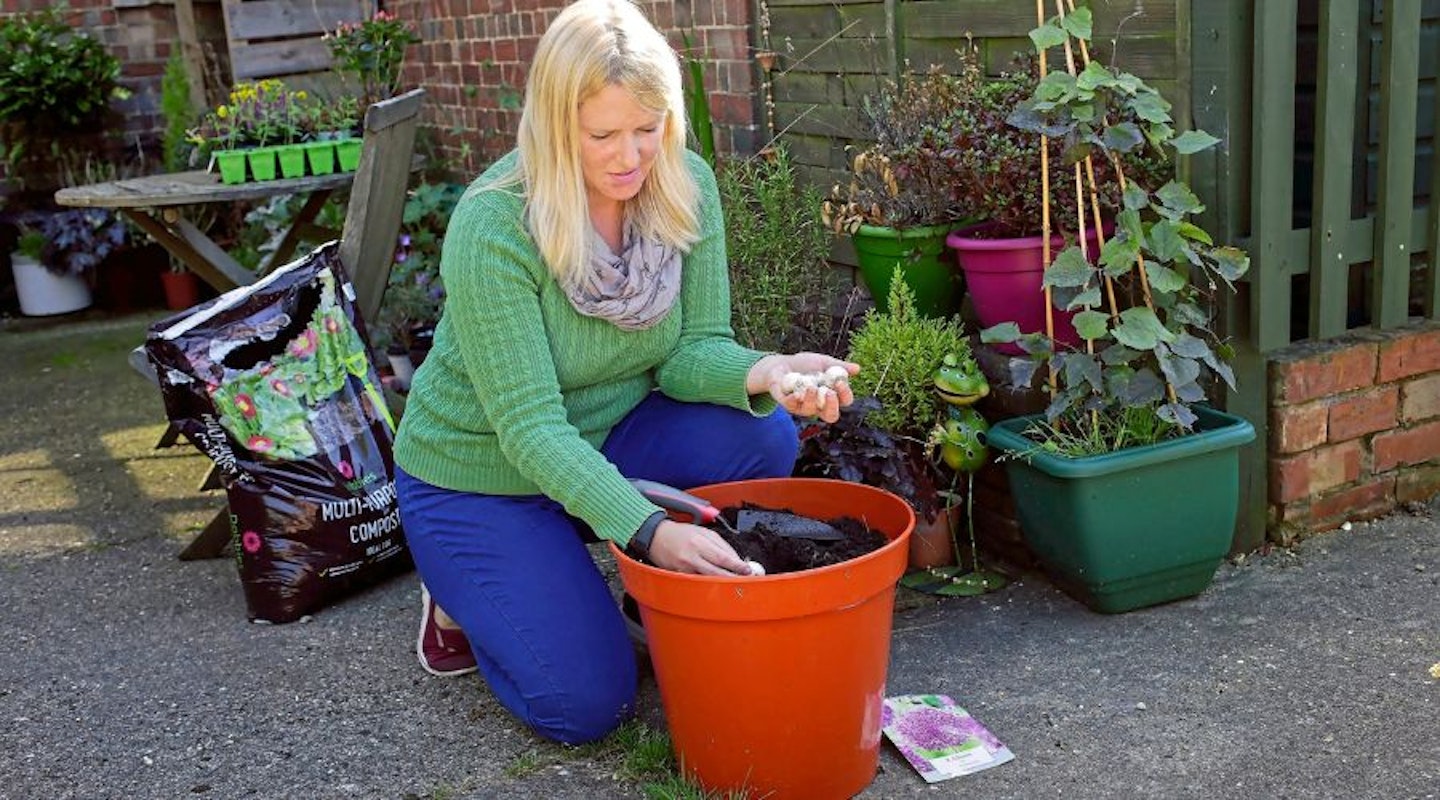
Alliums hate soggy conditions though, so if your soil gets at all water-logged, when you plant the bulbs, mix in one-third grit to two-thirds soil or add a 2cm grit layer in the base of the hole. If you’re planting in a container, use a half-half mix of peat-free multipurpose compost and John Innes No.3 for best results.
Post-planting care
Allium seedheads can look just as exciting as the flowers and give weeks of interest, but remember to remove the seedheads before the small black seeds hit the ground to avoid getting a rash of grassy seedlings.
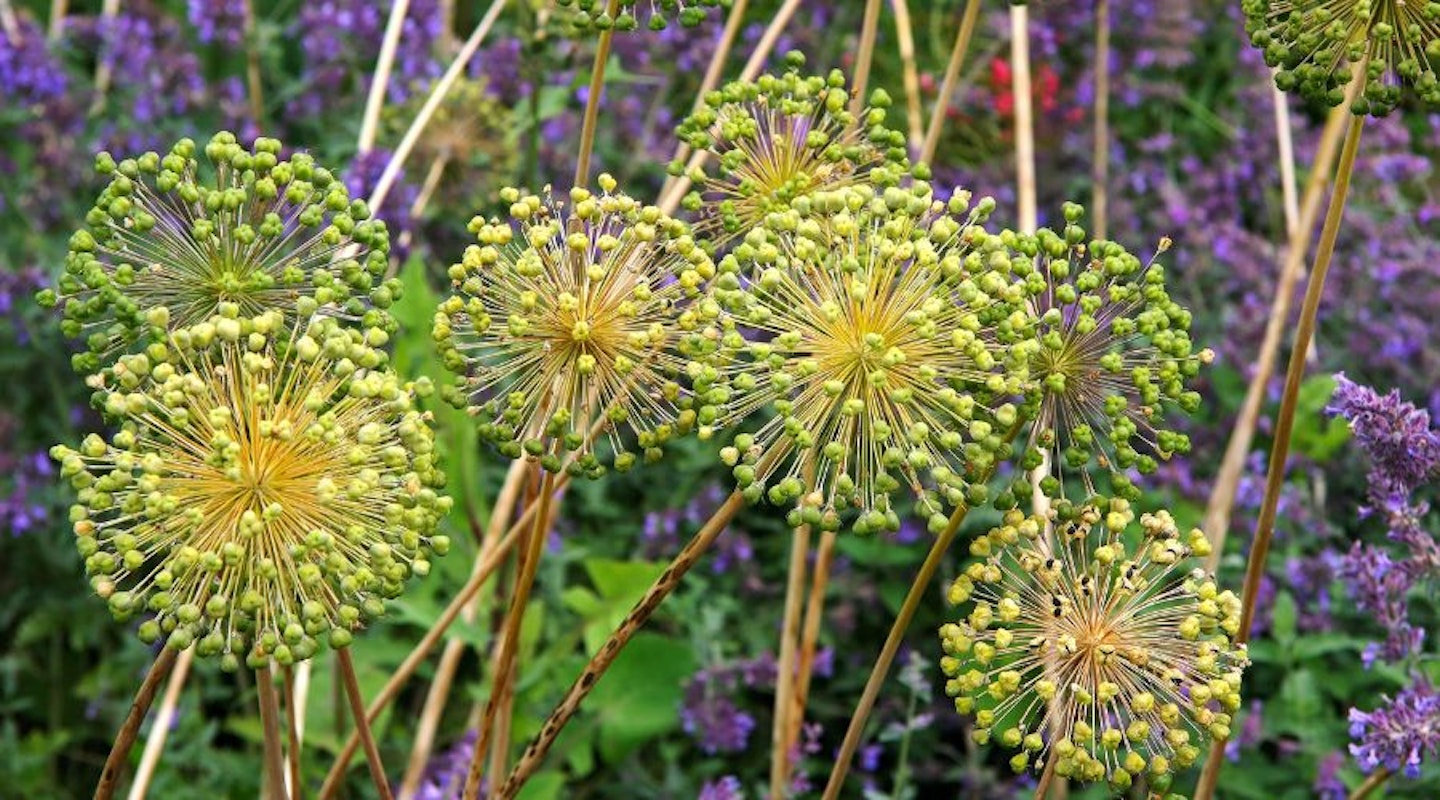
Most alliums reappear reliably, but it’s worth planting more in future years to keep the show going with plenty of vigour.
Over the years, alliums can become congested, resulting in poor flowering. To deal with this, once foliage has withered, lift and detach any new young plants, called ‘offsets’. These offsets can then be planted in the garden or, alternatively, in pots of free-draining compost.
Allium bulb planting FAQs
When is the best time to plant allium bulbs?
Allium bulbs should be planted mid to late autumn, and supplies of allium bulbs are plentiful at garden centres this time of year, providing a wide choice of heights and colours, including purple, pink, white, mauve and blue.
What type of soil is best for allium bulbs?
There’s no need to add well-rotted manure or compost to reasonably fertile borders before planting. Allium bulbs don’t need excessive levels of nutrients in the soil – a dusting of Growmore in spring when bulbs are growing will suffice if soil is poor.
If you must plant in heavier soil, add a layer of grit at the base of planting holes, to improve drainage.
How deep should I plant allium bulbs?
Plant allium bulbs at two or three times their depth.
Can I plant allium bulbs in the spring?
Bulbs should be planted in autumn, but you can buy alliums in small pots from the garden centre in spring to plant straight in the garden. Look for plants where the leaves are already pushing up through the compost and there are a few roots peeking out from the base of the pot.
At home, tip the bulbs out of their pots, keeping as much of the original compost around the roots as possible. Sometimes alliums are sold with several bulbs packed in together in one pot. If you find this, plant these as one clump rather than separating them, for an instant display. All alliums need to be planted at the same height in the garden soil or container as they are growing in the pots you buy them in, so be prepared to dig deep if needed.
Can I plant allium bulbs in containers?
Alliums are a stylish choice for growing in a pot. They don’t like a lot of water so are easy to care for. Alliums will grow happily in deep pots of John Innes No.3 compost, but adding 20 per cent horticultural grit is recommended in order to boost drainage.
Allium schubertii are most striking with their sputnik heads floating in the space above tall stems. Pair them with lemon-scented thyme ‘Silver Queen’ in a silvery planter for a look that’s out of this world!
Re-pot container-grown alliums annually in fresh compost in autumn to guarantee the best display next year.
Do allium bulbs need to be watered after planting?
Bulbs should be left to their own devices in moisture-retentive, well-drained soil. Watering is only needed if spring is dry.
Can I cut alliums for indoor vases?
Alliums make fantastic cut flowers. They last for weeks as fresh blooms in a vase of water thanks to their naturally strong stalks, just change the water every two or three days. Even after their flowers fade, their seedheads look striking as a decoration. When you cut them, leave a short section of the leafy part of the stem on the plant. And add a drop of bleach to the vase water to minimise the oniony smell.
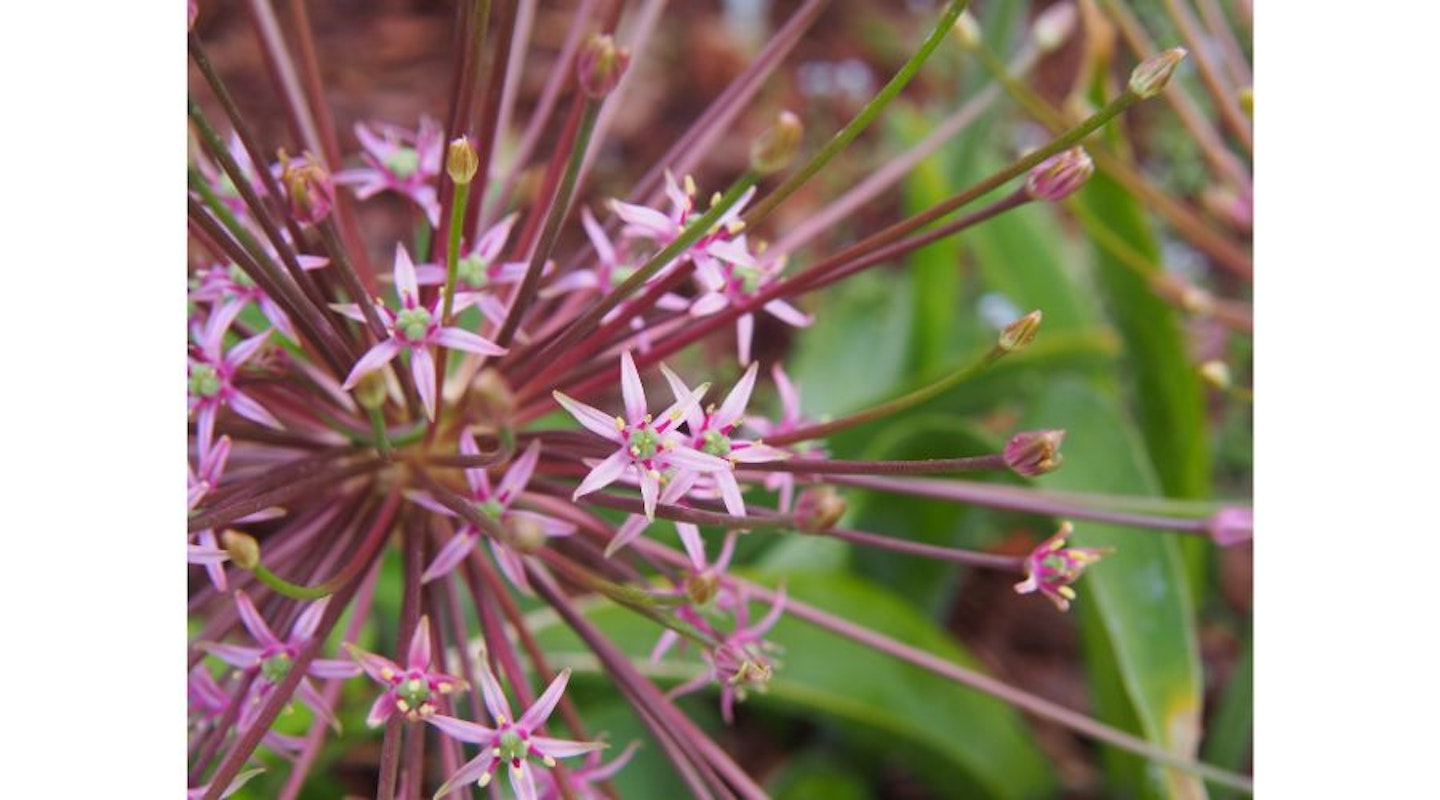
What to read next:
When to plant daffodil bulbs for bright spring blooms, according to our gardening expert
When to plant dahlias for timing perfection – according to gardening experts
Best trailing plants for hanging baskets to transform your garden
Subscribe to Modern Gardens magazine and get the most out of your outdoor space. Discover everything you need to know to make your outside space look fantastic, quickly and easily, with hundreds of simple ideas, designer tricks, affordable products and expert advice in every issue of Modern Gardens. View our latest subscription offers to save on shop prices.
Angela Kenny is features and production editor for Modern Gardens magazine and is always on the look out for new and trending modern garden inspiration.
